Published Jul 7, 2023
WARP FIVE: ‘Ad Astra per Aspera’ Director Takes Number One to the Stars
Valerie Weiss details her approach to Strange New Worlds, displaying Illyrian culture, Spock's outburst, and more!
SPOILER WARNING: Discussion for Star Trek: Strange New Worlds Season 2, Episode 2 "Ad Astra per Aspera" to follow!

Getty Images / StarTrek.com
Welcome to Warp Five, StarTrek.com's five question post-mortem with your favorite featured talent from the latest Star Trek episodes.
The start of Star Trek: Strange New Worlds’ sophomore season had the fate of an U.S.S. Enterprise officer weigh heavily on its crew. In “Ad Astra per Aspera,” a courtroom drama episode that the franchise's fans instantly regarded with high praise, director Valerie Weiss had not only Captain Pike's Number One, Una Chin-Riley, stand trial, but the rigid ideals of the Federation as well.
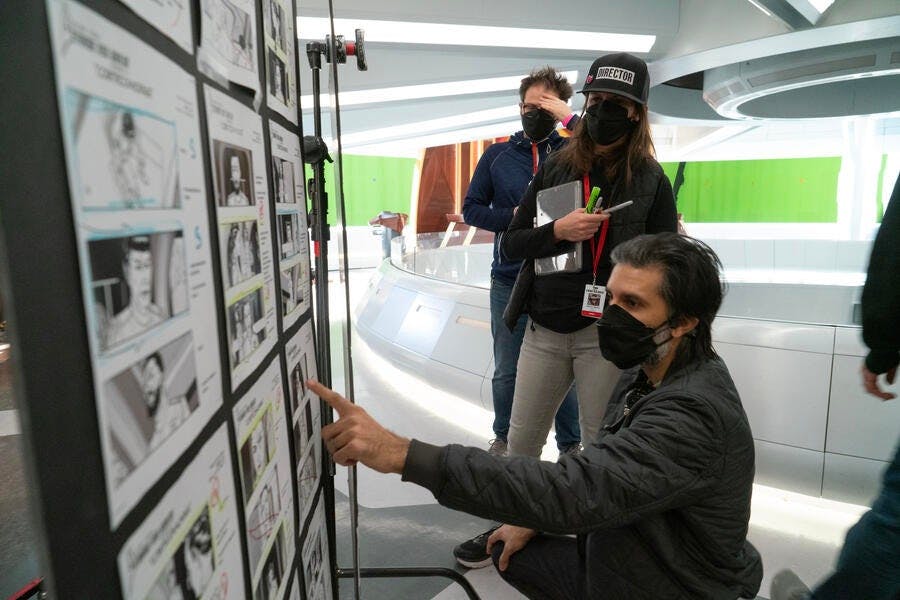
StarTrek.com
We previously spoke with Yetide Badaki about one of Star Trek's finest hour of television. Now, StarTrek.com had the opportunity to dive even deeper into "Ad Astra per Aspera" with episode director Valerie Weiss to discuss how she viewed Illyrian society, the friendship between Una and Neera, her scientific past life, Spock's outburst, and more!
Making First Contact with an Incredible Head Start
Weiss had a unique path to the final frontier. The director still considers herself a relative newbie to Star Trek; however, when she moved to Los Angeles, her upstairs neighbor was Oscar-nominated Michael J. Pollard (for his supporting role in Bonnie and Clyde).
“We were very good friends with Michael J.,” shares Weiss. “He was in the Star Trek episode ‘’ so I remember we all watched it. That was my first intro to Star Trek, which is not people’s typical entry.”
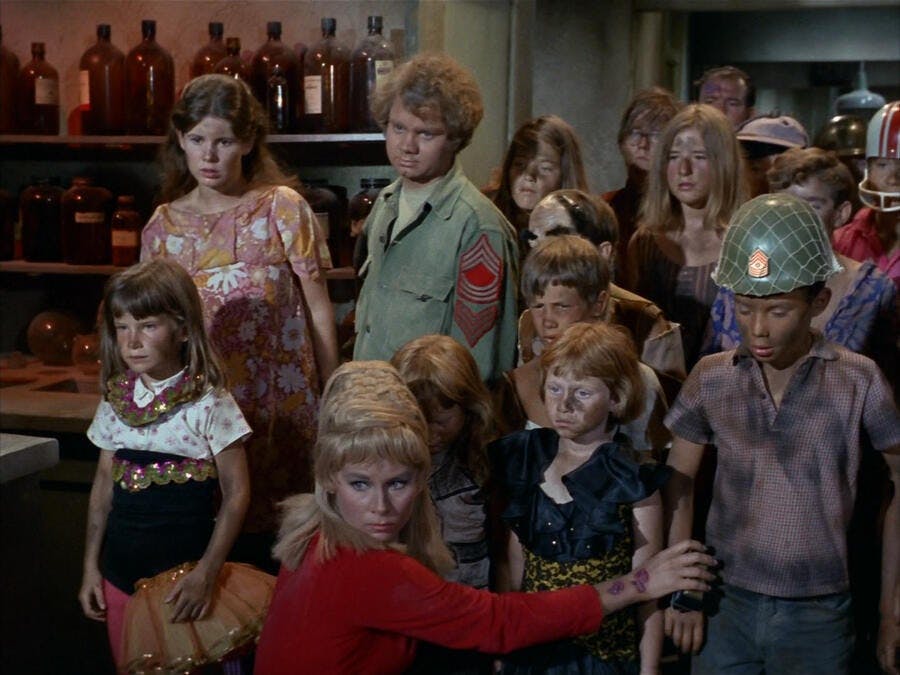
StarTrek.com
Her journey didn’t stop there; when Weiss got the interview to meet on the show through her close friend and collaborator, one of the series’ cinematographer Benji Bakshi, she did a “deep, deep dive,” especially with the Original Series. “This is exactly how I think, how I feel, how I approach storytelling,” reflects Weiss. “It was like, ‘Where have you been all my life?’”
Thankfully the universe of Star Trek wasn’t out of reach for Weiss. Before her prolific career as a director in television, Weiss was a scientist with a Ph.D. in biological chemistry and molecular pharmacology from Harvard Medical School. As such, tackling the story of “Ad Astra per Aspera” was something she couldn’t wait to chew on.
Utilizing both her background in biological sciences and courtroom procedural television, Weiss notes, “Eugenics and genetic modifications, GMOs and all of that, can be scary to the general public who doesn’t understand science. What you have to do is be able to separate the process and procedure from the ethics of how it’s being used. They’re two separate things; that’s really what we have to be doing in our legal and justice system anyway. You can’t just have blanket laws and blanket statements about anything because there’s nuance to everything.”
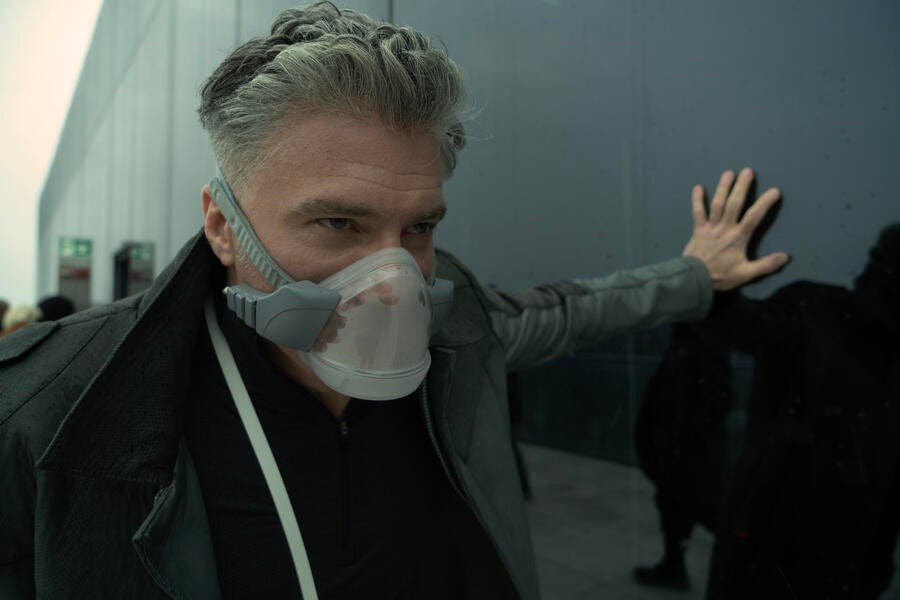
StarTrek.com
“In the case of Illyrians, their genetic modification is something to be celebrated,” Weiss elaborates. “It allows them to live in environments that others can’t live on. The way I think about the Illyrian colony; they’ve been given this crappy place to live where you can’t breathe – a place that nobody else wants. Instead of dying, complaining, or going extinct, they change and adapt and build something beautiful.”
Showcasing the Look and Feel of Neera and the Illyrian World
With that celebration of a culture that not only survived, but thrived, Weiss and the rest of the creative folks behind-the-scenes took great care to make sure that visually came across on-screen.
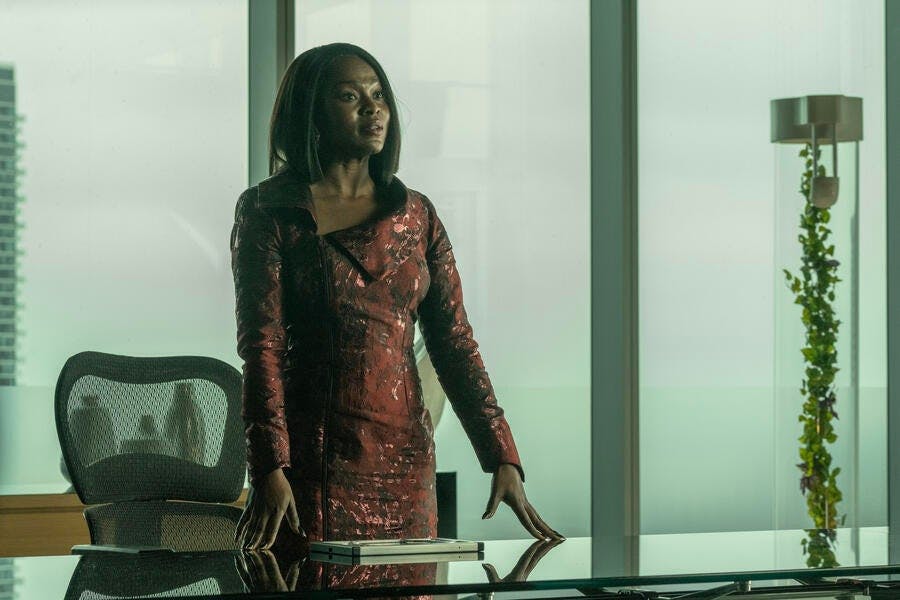
StarTrek.com
“That’s why I wanted the costumes for all the extras and for Yetide [Badaki] in that first scene to be jewel-colored and bright and have it say, ‘You can’t get us down. We’re survivors. Look what we’ve built – this beautiful metropolis – and are very successful,’” Weiss proudly recalls. “That’s an example of celebrating genetic modifications and adaptation. I was able to understand that very quickly as a scientist and not feel intimidated or attach a negative stigma.”
, who portrays the Illyrian prosecutor Neera Ketoul, and her praise of costume designer Bernadette Croft as well as the hair and makeup teams, Weiss reveals, “From the moment we started prep – I love costumes – it was the first place I wanted to go. I said to our AD George [Assimakopoulos], ‘Take me to costumes; I want to meet Bernadette.’ She’s brilliant.”
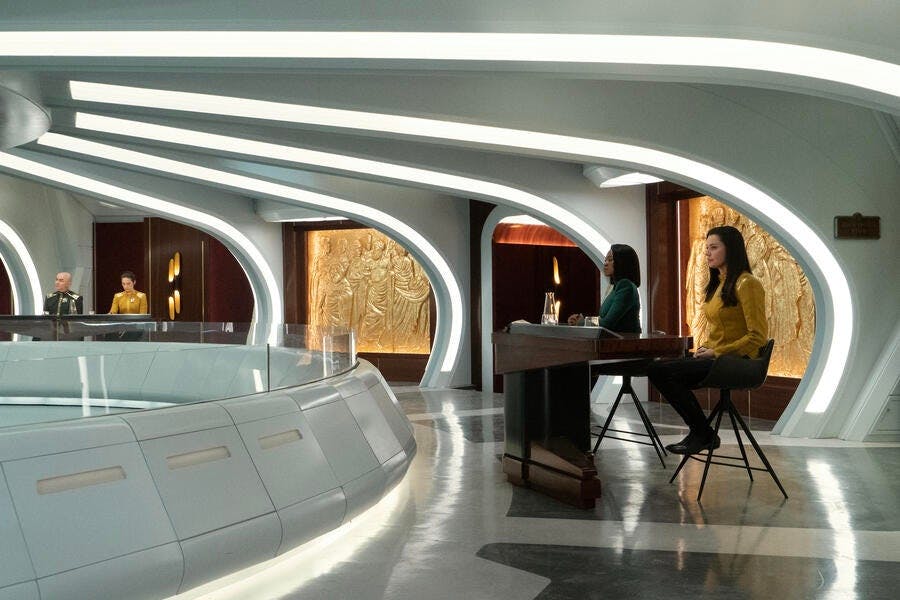
StarTrek.com
“There's so much we get to do,” adds Weiss. “We get to do world building with the Illyrian colony, so let's start there. I knew we were going to be shooting in the circular curvilinear courtroom. So more than anything, visually, I wanted Neera to be a fish out of water. I wanted her to feel out a place in every way because it just raises the stakes. It's harder to do what she's doing if that's the case. So I said, ‘Let's be as angular as possible. Let's give her that sharp bob. Let's make the nails pointy, but all in a way that's very high fashion as well. She cares about how she looks and she is proud of her culture. I wanted it to feel like a cultural choice as well. That was a very, very strong intentional decision in designing the look for the Illyrians and Yetide's character specifically.”
Framing Una Chin-Riley’s Case and Arc
As for the Illyrian at the center of “Ad Astra per Aspera,” the story of the Enterprise’s first officer was an opportunity for Weiss to not only showcase Una Chin-Riley’s individual story, but also the Federation’s prejudices on a larger scale.
“I just love that such an important issue to our humanity and justice system was literally on trial in this episode,” remarks Weiss. “I had done Suits, Bull, How to Get Away with Murder, and For the People; I’d done so much work in that arena. This was really fun because I knew my way around how to make a courtroom episode, elevate it, and be about the point of view of who are we with. Especially as a courtroom episode arc, you’re narrowing in. You’re building momentum and suspense, and I’d already had that in my toolbox.”
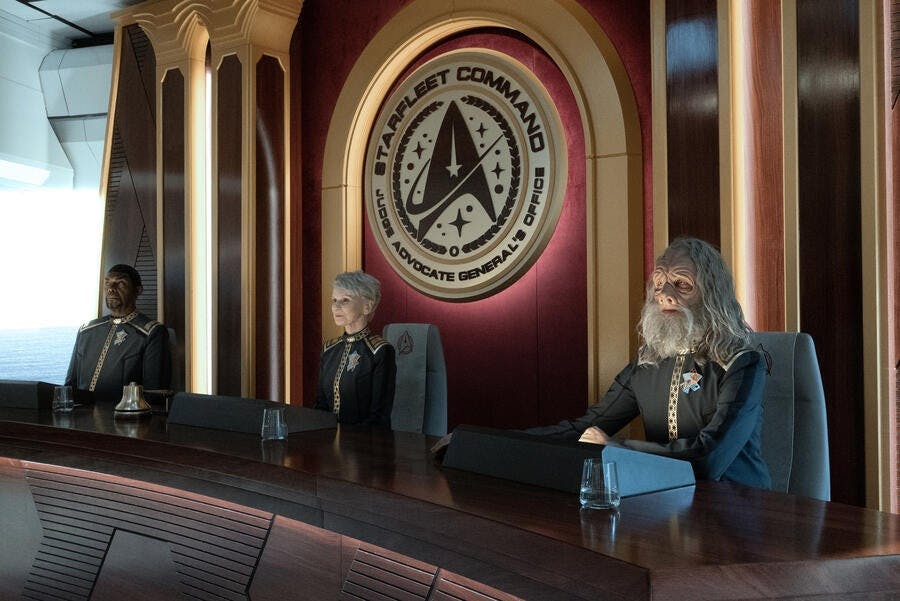
StarTrek.com
“Then to come and take Dana Horgan’s amazing script and really amplify that,” she continues. “The whole system is on trial in this case, and to come up with a set of cinematic rules about who we’re with, how the camera’s interacting with each character. We, Benji Bakshi, who beautifully shot this episode, and I, we had very strict rules for each character, their arcs, and how we would shoot them at the beginning of the episode and at the end. You subliminally feel that progression as you’re going. There’s not just an emotional progression and narrative progression, or even an ethical progression happening. There’s a visual progression that’s underlying each part of the episode. I was very proud and excited to get to do that with Dana’s script.”
With Number One, fans start the episode with Una obscured in the framing of the scenes, culminating to the end in the Transporter Room, where we finally see her proud in a bull body shot, surrounded with the love and cheer of her crew. Weiss calls Una’s journey over the course of the episode as “an arc of persecution to acceptance.”
The Power of Female Friendships
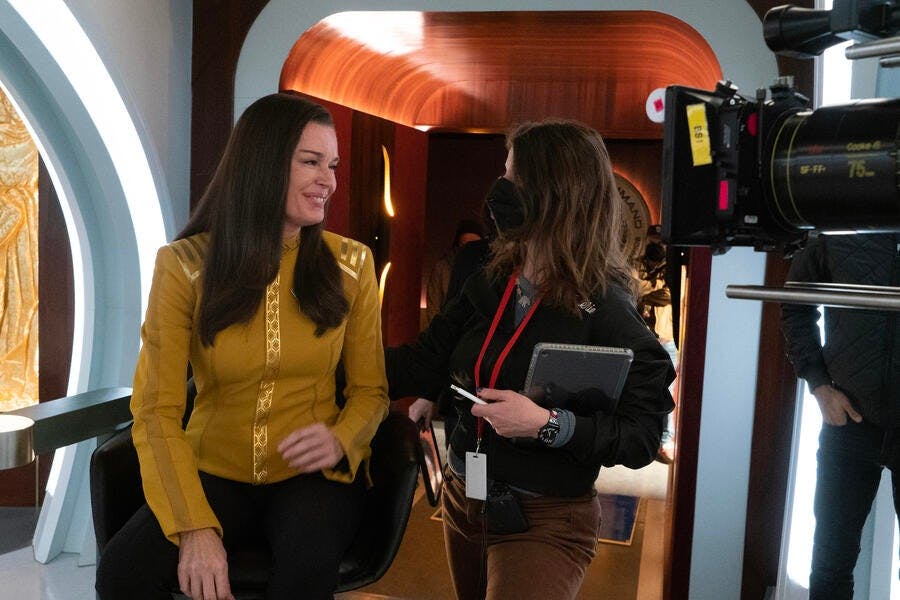
StarTrek.com
In our previous discussion with Badaki, to her character Neera’s childhood friendship with Una. While “Ad Astra per Aspera” tackled a large, timely topic, it also focused on a timeless aspect of female friendships.
“I’m so happy she shared that with you guys,” Weiss states warmly, “because that’s really a key to why the episode’s so successful. It was this bonding we did. As soon as I got there, we had dinner, the three of us. I just love a onesie, and my favorite company is in Toronto. I bought wrap gifts for Yetide and Rebecca [Romijn]; we all had matching onesies. It related to this idea that I talked to her about – think of it like a slumber party. That’s what being a best friend is; you sleep over at their house all the time.”
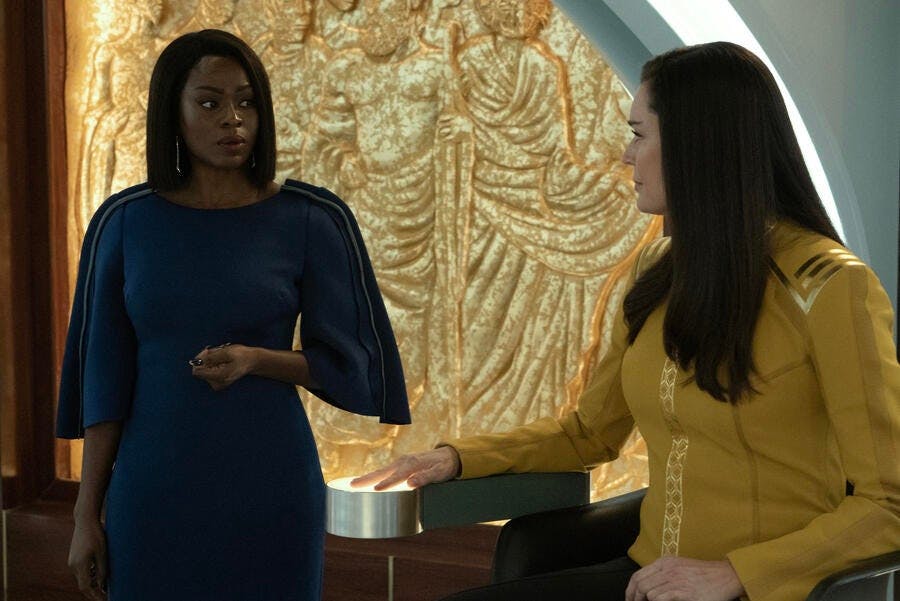
StarTrek.com
“I wanted them to have an emotional attachment to ‘ad astra per aspera,’” she continues. “And that was what I came up with. It’s more than just a saying to them. That’s their history; that’s their connection to each other. When that was ripped away from you, that had nothing to do with them. Adult decisions separated them. What’s more painful? Then you were left the rest of your lives to pick up the pieces and try to understand it. Only now you’re allowed to talk about it. It’s such a traumatic event because it was so emotional. It was so easy then during Una’s trial, when she’s on the witness stand, to emotionally access moments. I would just remind them, ‘Okay, this is late at night and you’re whispering these things to each other.’ Instantly, we were all in tears.”
Beyond Una and Neera, We Also Have the Enterprise Crew
Despite being such a heavy emphasis on Una, her case, and her past, Weiss found incredible character moments for Number One’s colleagues aboard the Enterprise and how it complements their own individual journeys, ranging from Spock’s outburst, La’An’s incessant guilt and shame, and Uhura’s care for her commanding officer.

StarTrek.com
“One of the things that I love about directing Strange New Worlds is that they build in prep with the director with all of the actors,” the director shares. “I had scheduled meetings; I’ve never seen that on a show where production takes it upon themselves to set that up. Every show should do that, and I bring it up now when I do a new one. I got time regardless of how prominent these actors were featured in the episode.”
“For instance, with Celia [Rose Gooding], we talked a lot about what was Uhura’s perspective about eugenics,” Weiss details. “When we’re cutting to her in that ready room scene, what does she think about that? As much as she loves her, is she disappointed that Una lied to everybody? Then we talked about her parents’ history in the show. It really informed all of their performances.”
Star Trek: Strange New Worlds - Spock's Outburst
“Same with Christina [Chong] and Ethan [Peck],” concludes Weiss. “I wish I had more of Spock in the episode. He’s so talented and has become a friend. He’s just so brilliant with comedy; I loved getting to have that scene with him, Melissa [Navia] and Babs [Olusanmokun]. I spent a lot of time with all the actors.”





